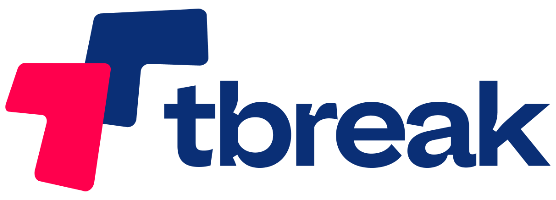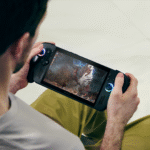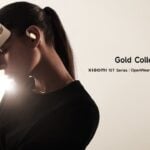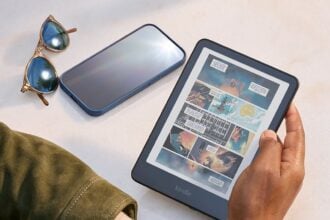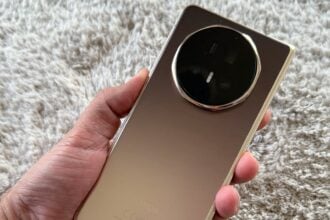The wearables industry is preparing for a major shift. For years, progress has meant slightly better watches, fitness trackers, or earbuds locked to one ecosystem. Dino Bekis, who leads Qualcomm’s wearables business, believes that model has reached its limit. The next wave will be about devices that work across brands, connect with minimal power, and act as intelligent portals to AI agents.
For product leaders, this vision is both challenge and opportunity. It calls for designing with interoperability in mind, preparing for agent-driven experiences, and anticipating power and compute requirements that are rising faster than ever.
Building an open foundation for interoperability
According to Bekis, the future of wearables cannot rest on isolated ecosystems. Instead, progress requires a shared framework that lets devices discover, connect, and transact seamlessly across categories. Qualcomm is working with partners to establish these protocols and then move them into a standards track where others can adopt them.
We’re… working with a couple of partners to start defining that… show the art of what’s possible… then open that up into much more of a standard-based environment.
For companies, interoperability reduces integration costs and expands accessory choices for customers. More importantly, it increases the potential scale of services that can run across multiple platforms.
Connectivity: from Bluetooth LE to micropower Wi-Fi
Short-range wireless is the backbone of wearables. Today, Bluetooth Low Energy (BLE) is the standard choice for discovery and pairing. Bekis expects this to continue in the near term but sees a migration path toward Wi-Fi as power budgets collapse.
We’ll start with Bluetooth discovery… Bluetooth LE is the best for that. Wi-Fi is a natural extension.
The breakthrough comes with micropower Wi-Fi, which Qualcomm has re-engineered to operate at a fraction of traditional power levels.
Micropower Wi-Fi… re-architected from the ground up… at power levels… 10% or less of traditional best-in-class Wi-Fi… 10–20 mW active, microwatts in sleep… battery life… as good or better than Bluetooth Low Energy.
With Wi-Fi able to match BLE on efficiency, wearables could operate as part of a continuous high-bandwidth network rather than juggling between radios. This would unlock richer use cases such as multi-device syncing and more responsive agent interactions.
The shift from apps to agents
Another major change Bekis highlights is how users will interact with wearables. The traditional app grid is giving way to an agent-first model, where natural conversation replaces tapping through icons.
It’s about the agent interface… we call them agentic appliances… a portal to their agent in the cloud… with on-device capability and a variety of sensors.
For businesses, this shift means designing devices that emphasize microphones, cameras, and contextual sensors. It also requires balancing on-device AI for privacy and latency with cloud-based inference for scale and depth.
Health and wellness at the core
Health monitoring remains central to the wearables category, but the way data is captured is expanding. Bekis notes that the ear is an emerging site for biometrics, complementing wrist-based sensors.
The ear offers… more accurate measures of certain biometric functions… leverage more sensors… for a triangulated assessment of wellness.
Headphones/earbuds with built-in sensors to measure stress… people are looking at blood glucose monitoring.
Health monitoring remains central to the wearables category, but the way data is captured is expanding. Bekis notes that the ear is an emerging site for biometrics, complementing wrist-based sensors.
Continuous monitoring… with privacy… enables a much more valuable discussion with your physician.
This creates an opportunity for companies to develop not only consumer-facing products but also enterprise and clinical solutions.
The smartphone: still central, but less critical
Wearables are increasingly capable of standing alone for moments such as workouts or calls, yet the smartphone remains the central hub.
You can accept calls on your watch… work out with earbuds and watch alone… there’s a smartphone-optional space… possible in the next 10 years.
The path forward is designing experiences that enhance independence while still integrating smoothly with the phone when needed.
There’s always going to be a place for [the] smartphone… other form factors must balance power, utility, performance, memory.
Compute, power, and the tension ahead
As devices evolve into agentic platforms, the demands on compute and power will only grow. Consumers expect more capable AI, higher performance, and longer battery life—all at once.
Demands are going higher for compute and NPU… battery life requirements are increasing… people want to see a week’s worth.
For developers and manufacturers, this means rethinking architectures, pushing silicon design, and optimizing models for efficiency without sacrificing responsiveness.
What form factors will succeed?
The answer is not a single product type. Watches, earbuds, and glasses each bring strengths. Bekis sees promise in glasses for their ability to combine audio, video, and sensors, but he is equally intrigued by the idea of AI appliances embedded into everyday items.
Glasses… bring AI, camera, video, audio… for the first time you’re getting everything together with sensory input… but I’m more excited to see AI appliances that blend into the background… maybe embedded in clothing or combined with existing devices.
The common thread is less about form factor and more about seamless, low-friction access to AI-driven services.
The wearable sector is at an inflection point. For years, progress has been measured in incremental updates—slightly sharper displays, marginally better sensors, and longer battery life. Bekis outlines a different trajectory: one defined by interoperability across ecosystems, wireless protocols that all but erase today’s power trade-offs, and a pivot from app-based experiences to agent-driven appliances.
For companies, the implications are clear. Invest in standards-based connectivity. Prepare for a world where Wi-Fi is as power-efficient as Bluetooth. Design around agents that act as primary interfaces. And rethink form factors not as isolated products but as portals to broader, continuous services. The organizations that adapt to this new landscape will be positioned not just to sell devices but to help define the next generation of personal computing.

